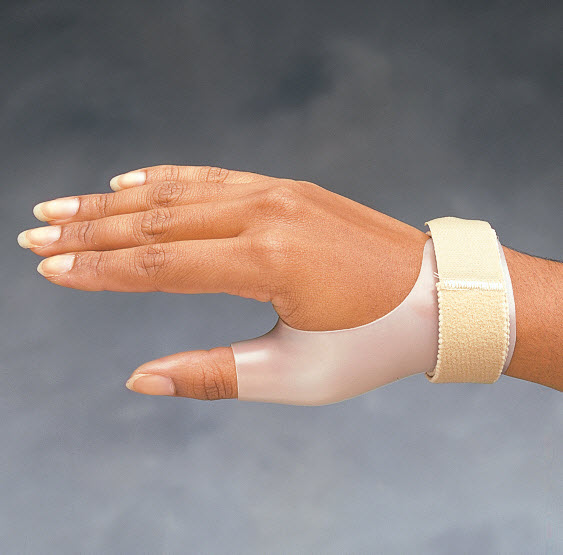


Cover from where the loop tape starts at the back of the hand to the fleshy part of the palm under the thumb. An alternative method for providing more stability is to take lengths of two inch (50mm) tape and wrap these over the loops, in the same direction as the anchor tape.Make at least two loops for good support or a few more if greater rigidity is required or wanted. X Research source As the name implies, front loops start at the front of your wrist / forearm, then loop around the back of your thumb and return to the frontal (anterior) wrist area. After securing the side loop, make a few more in the opposite direction, which are called front loops. The best tape to use for the thumb is adhesive, water resistant, non-stretch (rigid), and between 25 – 50 mm in width.The single anchor around the wrist often works best with the figure eight loops around the thumb. However, this can sometimes cause the entire scaffolding come loose and get dirty. You may also wish to add an anchor near the end of your thumb - near the most distal joint.If it's too tight, your hand/fingers will tingle, feel cooler to the touch and start to turn bluish. Apply anchors gently and with care to prevent circulatory problems.X Research source Before taping the forearm area, make sure to position your wrist / hand in a neutral position - your wrist should be extended backwards a little. This strip is considered an anchor, which gives support and provides fixation points for the various taping methods you can use to tape or strap your thumb. Place a strip of tape in a comfortable (not too tight) ring around the base of your wrist, just below the bony prominences. The isopropyl alcohol is not only a good antiseptic, but it also gets rid of any oily or greasy residues that might prevent the tape from sticking to your skin. Alcohol wipes are great for cleaning skin.Don't apply any moisturizers because the tape won't stick as well.
#Dislocate your thumb without pain skin
After you finish shaving, the skin should be thoroughly cleaned to remove any oils and sweat, then dried with a clean cloth.Make sure to use shaving cream or other lubricants while shaving because it will reduce the risk of any nicks or cuts to your skin.In general, it's recommended that you shave the skin about 12 hours prior to taping, which allows it to heal from any irritation caused by the shaving. The purpose of shaving the skin is to make the tape adhere better and to prevent irritation and pain when you need to take the tape off. Once you've decided that your thumb injury is appropriate to tape, grab a safety razor and shave the entire area around the thumb and back of your hand (stopping at your wrist). It would also prevent the index finger from being functional. Doing so would put the thumb in an unnatural position and risk further injury. "Buddy taping" fingers together for support and protection is common for sprain injuries, but the thumb cannot be taped to the index finger.Instead, clean the wound, put pressure on it to stop or slow the bleeding and wrap it in a bandage (if possible) before going to the hospital for an assessment. These more serious types of injuries are not candidates for thumb taping and require immediate medical attention instead, which often involves splinting, casting and/or surgery. X Trustworthy Source Cleveland Clinic Educational website from one of the world's leading hospitals Go to source In contrast, a broken or severely dislocated thumb is typically very painful, looks crooked, moves unnaturally, and involves considerable inflammation and internal bleeding (bruising). Sprained thumbs cause mild-to-moderate sharp pain and often lead to some inflammation, redness and bruising. Taping an injured thumb is helpful if the injury is a sprain, strain or slight dislocation, but it's not a good idea for fractured or badly cut thumbs.


 0 kommentar(er)
0 kommentar(er)
